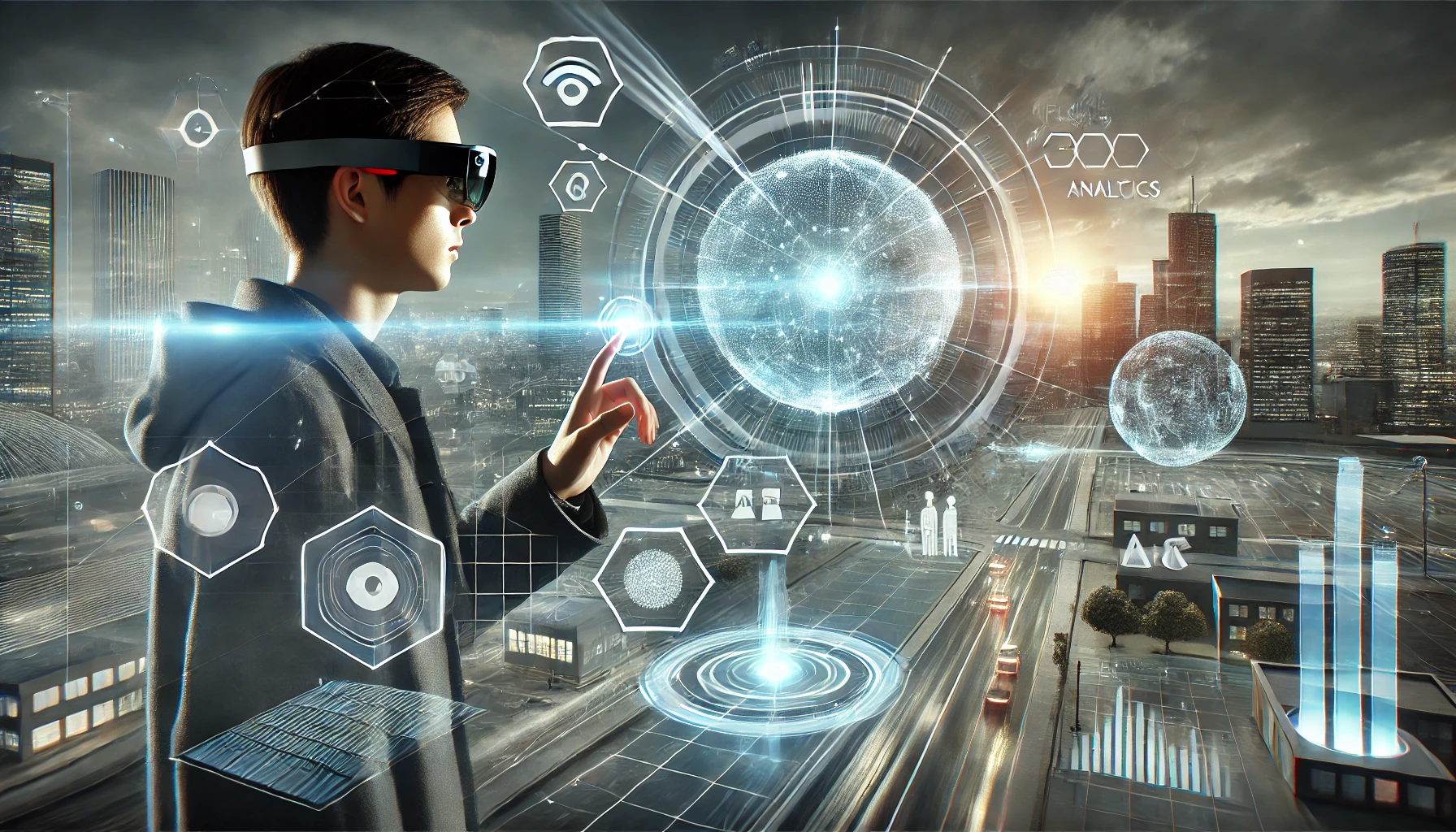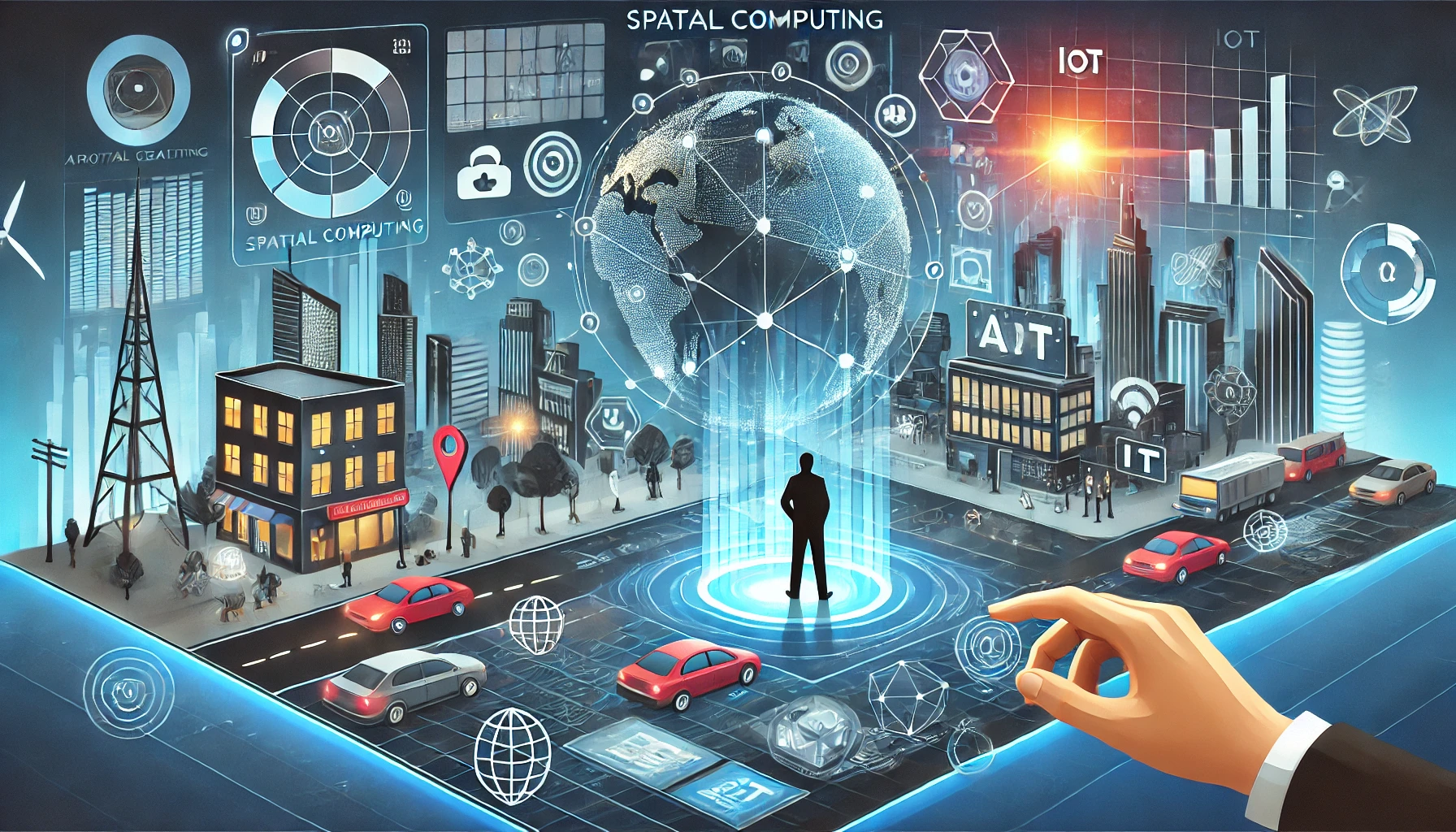Understanding Spatial Computing: The Future of Digital Interaction
Technology is constantly evolving, making our interactions with digital devices more seamless and intuitive. One such breakthrough is spatial computing, a concept that blends the digital and physical worlds to create immersive experiences. But what exactly is spatial computing, and how does it impact our daily lives? Let’s explore it in simple terms.
What is Spatial Computing?
Spatial computing is a technology that allows computers to understand and interact with the physical world in a natural way. It combines augmented reality (AR), virtual reality (VR), artificial intelligence (AI), sensors, and the Internet of Things (IoT) to create interactive and immersive experiences.
Think of it as a system where digital objects and real-world environments interact in real time. For example, imagine wearing smart glasses that display digital information about the objects around you. That’s spatial computing in action.

How Does Spatial Computing Work?
Spatial computing relies on several key technologies:
Sensors and Cameras – These devices capture real-world data, such as motion, gestures, and surroundings.
Artificial Intelligence (AI) – AI helps computers understand the environment and respond accordingly.
Augmented Reality (AR) & Virtual Reality (VR) – AR overlays digital information onto the real world, while VR creates a fully immersive digital environment.
Cloud Computing – Data is processed in real-time using cloud services to enhance responsiveness.
IoT (Internet of Things) – Connected devices communicate with each other to improve automation and interactions.
By combining these elements, spatial computing enables machines to perceive and interact with the world similarly to humans.
Real-World Examples of Spatial Computing
1. Augmented Reality Shopping
Have you ever used your phone to see how furniture might look in your home before purchasing it? Apps like IKEA Place use spatial computing to allow customers to visualize products in their space before making a decision.
2. Healthcare and Surgery
Doctors use spatial computing in surgeries with AR-based navigation. For instance, Microsoft HoloLens helps surgeons see 3D models of a patient’s organs, improving accuracy and efficiency in complex procedures.
3. Smart Cities and Navigation
Google Maps and Apple Maps use spatial computing to provide real-time navigation with AR directions. Some smart cities use it to manage traffic, monitor infrastructure, and enhance security systems.
4. Gaming and Entertainment
Popular games like Pokémon GO use AR to blend digital characters with real-world locations. Similarly, VR gaming devices like Oculus Quest offer immersive experiences by placing players in virtual environments.
5. Workplace Collaboration
Companies are using spatial computing for remote collaboration. Platforms like Meta’s Horizon Workrooms allow employees to meet in virtual offices, interact with 3D objects, and work together in a shared digital space.
Benefits of Spatial Computing
Enhanced User Experience: Makes digital interactions more natural and engaging.
Increased Productivity: Helps industries like healthcare, engineering, and education by improving efficiency.
Better Training and Learning: Creates realistic simulations for hands-on training in fields like aviation and medicine.
Seamless Human-Computer Interaction: Reduces the need for traditional input methods like keyboards and screens.
Challenges and Future of Spatial Computing
While spatial computing has great potential, it also faces challenges:
Cost: Advanced spatial computing devices can be expensive.
Privacy Concerns: Collecting and processing real-world data raises security issues.
Technical Limitations: Developing accurate and responsive spatial systems requires significant innovation.
Despite these challenges, spatial computing is expected to become more advanced and widely adopted in the coming years. With improvements in AI, 5G connectivity, and computing power, spatial computing will revolutionize how we interact with technology.
Conclusion
Spatial computing is transforming our digital experiences by merging the real and virtual worlds. From shopping and healthcare to gaming and navigation, this technology is reshaping industries and improving daily interactions. As advancements continue, spatial computing will play a crucial role in making technology more immersive, intuitive, and efficient for everyone.






